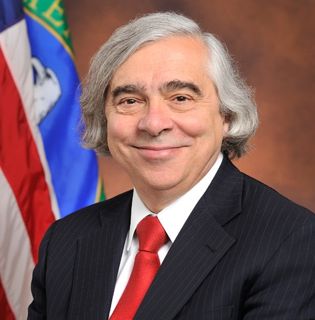In PSC sees Ameren, Grain Belt transmission lines differently, the reporter has discovered a difference between what he dubs "traditional" utility projects and "non-traditional" utility projects. But, apparently, that's as far as his curiosity extends, implying that the decisional factor for the PSC is rooted on the "traditional" appearance of the utility applying for the project.
Two transmission line projects that promoters say are needed to connect wind generation to the electric grid could get different treatment from Missouri regulators.
The "promoter" of Grain Belt Express is a company with a pecuniary interest in building the project. Grain Belt Express did not participate in the MISO planning process to independently determine if its project is "necessary." GBE's bought and paid for witnesses say what they're paid to say and are given equal weight to any intervenor-funded witnesses by a PSC. No independent party tasked with planning the transmission grid has found GBE to be "necessary."
Therefore it shouldn't be puzzling or surprising that:
At least three of five Missouri Public Service Commissioners indicated this week they thought the project met its criteria for a certificate of convenience and necessity, which would give the utility the right to use eminent domain if it has to. A final vote will be in the coming weeks.
There is little a PSC can do to force a merchant project to alter its plans to create a more beneficial project, or to look at other solutions to the merchant's stated problem, such as building renewables in other regions the merchant intends to serve. A merchant project is "take it or leave it," and the MO PSC chose to leave it. Conversely, an RTO will look at multiple solutions to an identified problem to come up with the best solution, and then has the muscle to make the best solution happen.
Regionally approved projects are weighed against other alternatives by the RTO and found to be the most efficient and cost effective solution to a recognized reliability, economic, or public policy problem. In contrast, GBE has proposed no alternatives to its own project, and there is no recognized regional problem the project attempts to solve.
This is how our "traditional" transmission planning/approval system works. The regional planning/operator system is ruled by existing federal laws and regulations. Under this traditional system, any person can propose a transmission project to a state PSC without going through the "traditional" process, but only if they accept all market risk and pay for it themselves. So the "traditional" system also covers merchant transmission, like GBE. What is new, or "non-traditional" is a brand new attempt by the U.S. Department of Energy to use a loophole in an old law to override state authority over transmission permitting and siting. This new "non-traditional" method of using political clout to build transmission despite state objection has never been used before and will be tested in the courts. "Non-traditional" has little legal basis, while "traditional" has existed for years and has the support of a whole library of precedent.
The MO PSC found GBE's claims that it would provide benefit to Missouri ratepayers unfounded, and when compared with burden on Missouri landowners, GBE did not pass muster. Lawlor's claims that GBE will prove benefits in a second attempt are all wet. Without an independent RTO order that a transmission project provides benefits to a region, convincing regulators there is a benefit is an exercise in futility. In addition, his threats that Missouri must approve GBE so as not to lose its "authority" are nothing but a lame attempt at coercion. Lawlor played that card the last time... and lost.
GBE has successfully clouded the issue of "need" for a transmission project. Everyone should understand what the MO PSC understands... "need" is determined by a RTO. GBE has no RTO-backing.
PSC Commissioner Bill Kenney, who voted against Grain Belt, noted the difference in a discussion of Ameren’s Mark Twain line during a webcast of a meeting Wednesday.
“I was one of three commissioners here who voted against the Clean Line Grain Belt Express because I felt it did not benefit Missouri customers,” he said. “I think this does benefit the ratepayers.”
Commissioner Stephen Stoll acknowledged opposition around Kirksville and Palmyra to Ameren’s 100-mile line. But Stoll, who opposed Grain Belt, said he saw the projects differently.
“I do feel for the property owners,” he said. “I know people don’t necessarily want these, but for the reasons I voted against Clean Line, I think in this case (Ameren) had gone through the requisite issues and came to us with a clear plan and that’s why I think they met the standards and I support it.”


 RSS Feed
RSS Feed